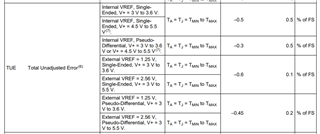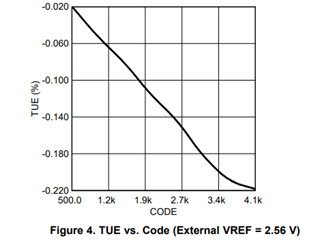Other Parts Discussed in Thread: ADS1115
Hi Team,
Our customer noticed that the measurement reading of the ADC128D818 in their prototype board is much higher that the computed value based on the formula in the datasheet.
There is a difference of around 0.4V between the measured voltage at the ADC input and the calculated value.
They are using Mode 1, input AIN2 (IN5), internal and external reference voltage and there is always around 0.4V from 0V to ~1.5V. Above ~1.5V the difference became bigger.
They are measuring the voltage at the test point M4. For example, the voltage at M4 is 1.0V and the ADC says 1.4V.
They are using the equation Vin=(Dout*3.3)/4095.




